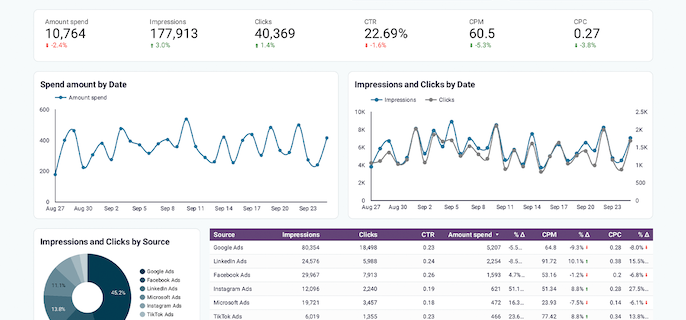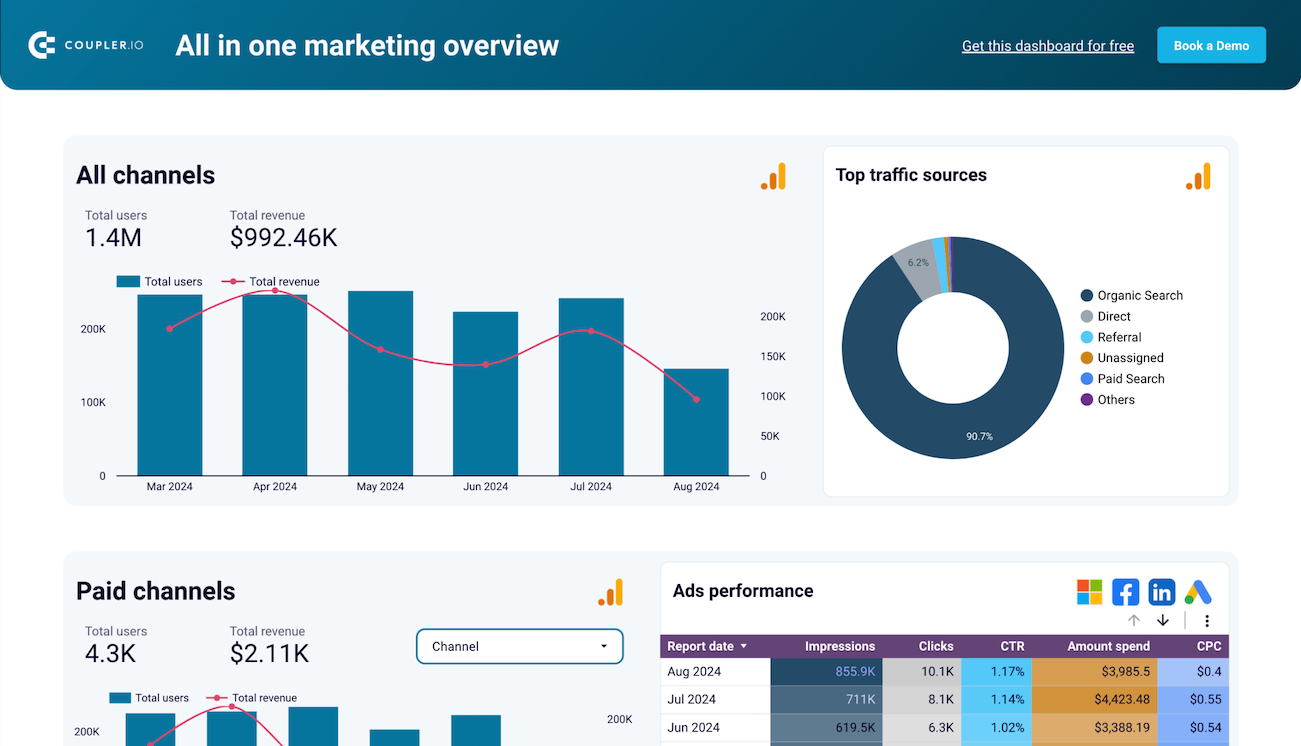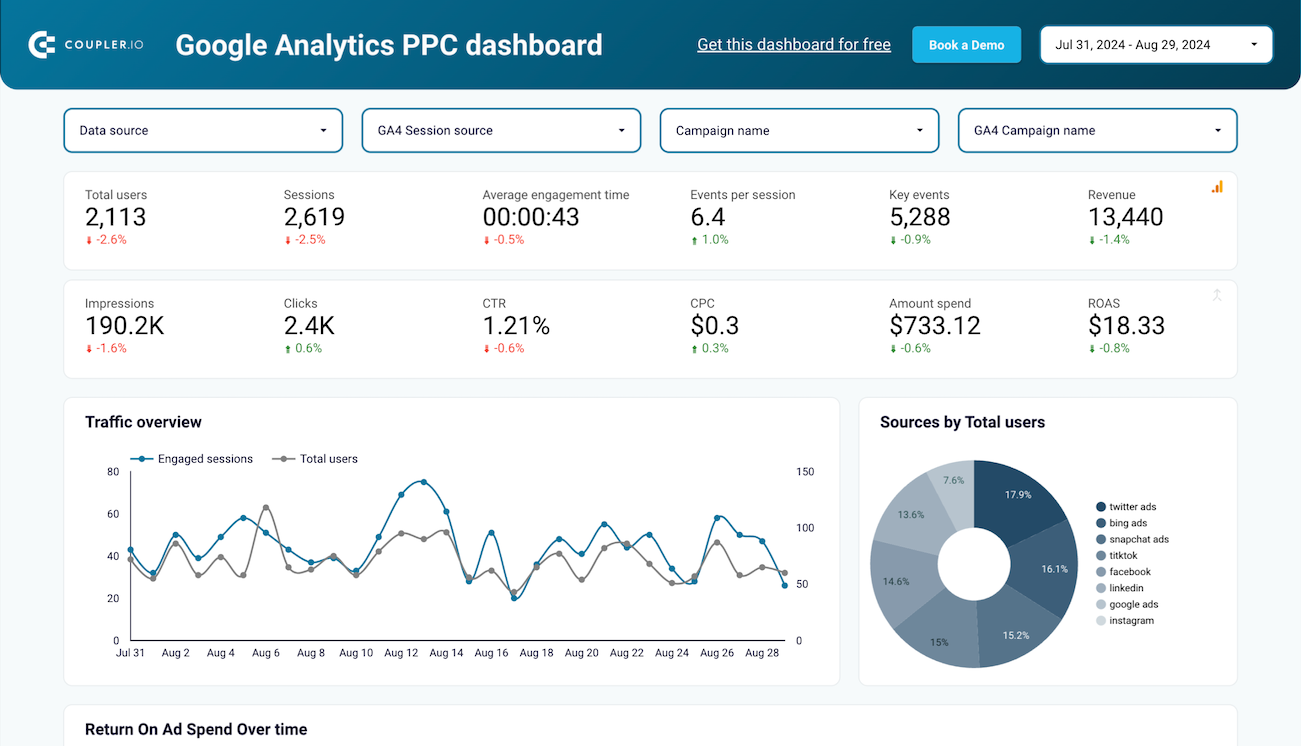What is a ROAS?
ROAS, or return on ad spend, measures the revenue generated for every dollar spent on advertising. It's a crucial metric for marketers because it quantifies the effectiveness of ad campaigns in generating sales. A high ROAS shows that the ads are driving a significant amount of revenue relative to the cost. This is an indicator of the efficient use of the marketing budget. Conversely, a low ROAS suggests the need for campaign optimization. Monitor and optimize ROAS to ensure every dollar contributes positively to the bottom line.
How to calculate ROAS?
To calculate the return on ad spend (ROAS), divide the advertising campaign revenue by the total cost.


Our key templates to track ROAS

Get a comprehensive PPC reporting tool to track the performance of your campaigns launched at multiple advertising platforms.










Monitor all your marketing channels with an all-in-one dashboard providing performance overviews of web analytics, ad campaigns, SEO, social media, and emails.














Get an overview of the traffic performance of your advertising campaigns launched across different PPC platforms.










How to improve ROAS?










